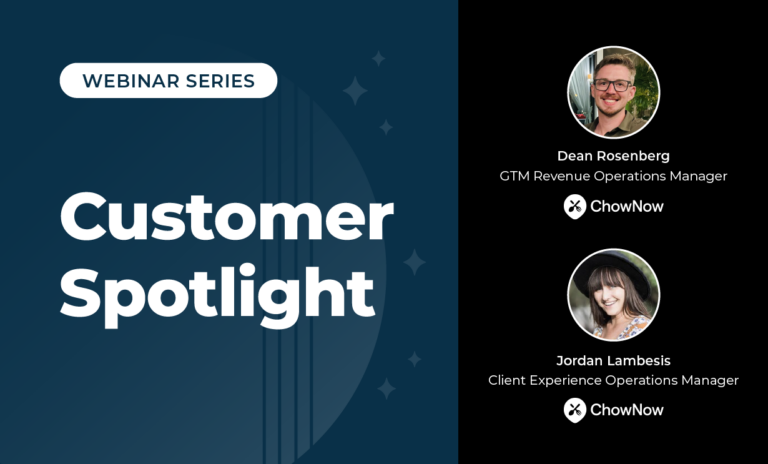In 2020, the global COVID-19 pandemic uprooted nearly everything, and “business as usual” quickly became “business as unusual.” For those waiting for business to revert back, you might very well be waiting for a change that is not forthcoming – many industries have been permanently changed, and are now at the beginning of a “new normal.”
As a function, Sales Development spans all B2B segments, and whether or not the core industry has changed, Sales Development continues its evolution. During the height of pandemic, many organizations retrenched, and Sales Development efforts reverted to the basic fundamentals and focused very much on tactical execution, all with a digital-first mindset.
Now, emerging from the pandemic, Sales Development is tasked with spurring growth, and emphasis is placed on growing by adding value to leads and their respective businesses, providing differentiated experiences and solutions to the challenges they face. However, this is now done within the context of a new buying landscape.

Buying, too, changed during the pandemic, and it also settled into a digital-first paradigm. In doing so, B2B buyers now expect the world-class customer journey experiences fostered by the best B2C brands, and potential buyers are better informed than ever before with the wealth of information available at their fingertips.
Sales Development professionals must adapt, growing the business by adding value to their prospects, and doing so through the integration of new technology tools and services.
Earlier this year, our colleagues at Tenbound, in partnership with RevOps2, published their Sales Development Benchmarks 2021 report, based on the findings of a survey conducted in February and March of 2021. Tenbound’s research covered sales development metrics from a performance measurement perspective, with the goal of establishing a foundation for ongoing, quarterly sales development benchmarks to enable Sales and Sales Development leaders to stay current on performance trends and development.
Below, we’ll cover five of Tenbound’s more intriguing findings.
#1 – Alignment is more important than ever
In some organizations, Sales Development reports into Sales; in yet others, it reports into Marketing. Regardless of formal reporting relationships, the fact of the matter remains that Sales Development is a bridge between those two functions. Sales Development Representatives (SDRs) are empowered and supported by Marketing, and as they’re the critical first human-to-human touchpoint with prospects, they set the table for Sales’ selling process. Close alignment has always been a key to success.

In combatting the pandemic-induced struggles in the past year though, most every B2B company relied extensively on SDRs to increase performance despite being inadequately prepared and supported for such a pivot in business operations. While in-person sales will likely increase toward the latter half of 2021, SDRs and the Inside Sales function will remain critical, and proper alignment across all revenue team functions will be required.
#2 – SDR ramp times get shorter
Tenbound reports SDR ramp time generally ranged between one to six months, with a median of three months. Ramp time averaged one month longer for both larger companies and those companies with annual contracted value (ACV) products of over $50,000.
Reducing ramp time for new SDR hires remains a key priority, especially in companies in quickly evolving markets. Proven ways to reduce ramp time include maintaining close alignment with Sales and Marketing, collaboratively setting clearly-defined and measurable goals, and hiring SDRs who exhibit the right behavioral characteristics.
#3 – Outcome-based metrics to gain momentum
Remarkably, less than 50 percent of survey respondents tracked pipeline and revenue outcomes from SDR activity. Effective, sustainable Sales Development just isn’t possible when there is a lack of strategic insight across the entire buyer journey.
Through the rest of the year and beyond, Sales Development leadership will face increasing pressure to adopt outcome-based metrics by achieving closer alignment with Marketing and Sales. More than ever, companies need to develop high-level, data-driven insights into the customer journey by tracking key metrics related to appointments set, pipeline generated and closed/won deals delivered.
#4 – Emerging companies conduct more outbound activity
Tenbound discovered both the maturity of the marketplace and the product/service greatly impacted activity levels and conversion rates of SDRs. Companies entering emerging markets with new products conducted approximately 50 percent more outbound activity than companies in well-established markets, reinforcing the idea that proactive outbound motions continue to be important. Less than half of survey respondents reported dedicated outbound and inbound SDRs, while those offering ACV solutions between $25,000 – $100,000 were 50 percent more likely to have dedicated inbound SDRs.
impacted activity levels and conversion rates of SDRs. Companies entering emerging markets with new products conducted approximately 50 percent more outbound activity than companies in well-established markets, reinforcing the idea that proactive outbound motions continue to be important. Less than half of survey respondents reported dedicated outbound and inbound SDRs, while those offering ACV solutions between $25,000 – $100,000 were 50 percent more likely to have dedicated inbound SDRs.
#5 – Sales Development activity remains inconsistent
Surveyed respondents reported highly inconsistent SDR activity levels between companies of different sizes. The lower the revenue, the higher the activity; the higher the revenue, more strategic approaches resulted in lower activity. The highest activity levels were found in companies with an annual revenue ranging between $20 to $50 million, specifically those with ACV products valued at between $100,000 and $1 million. SDR activity was much lower in enterprise field sales, but is likely to increase post-pandemic as in-person sales activities return.
Summary
Whether your company experienced a pandemic boom, bust or something in between, as 2021 progresses, growth will again rise to the top of your priority list, whether it’s in continued expansion or in recovery mode. With the importance of SDRs in your go-to-market motions, it will be critical to leverage your strengths, shore up your opportunities for improvement, and keep a close eye on the dynamic shifts of your marketplace. Use the Tenbound report and others, like The Bridge Group’s Sales Development Metrics & Comp Report, to benchmark your efforts and help develop your sustainable competitive advantage.







